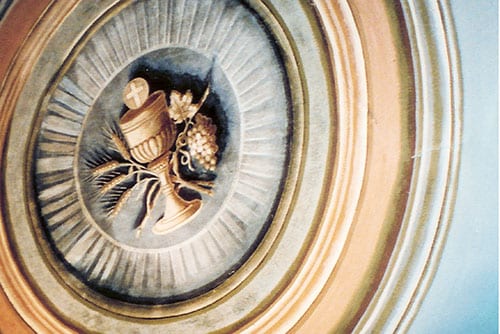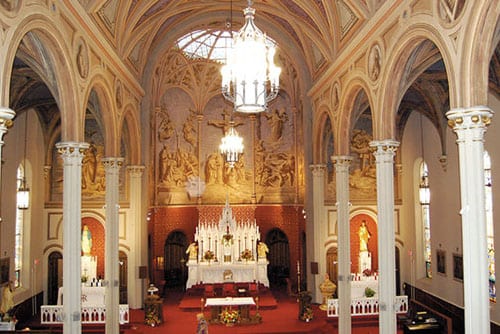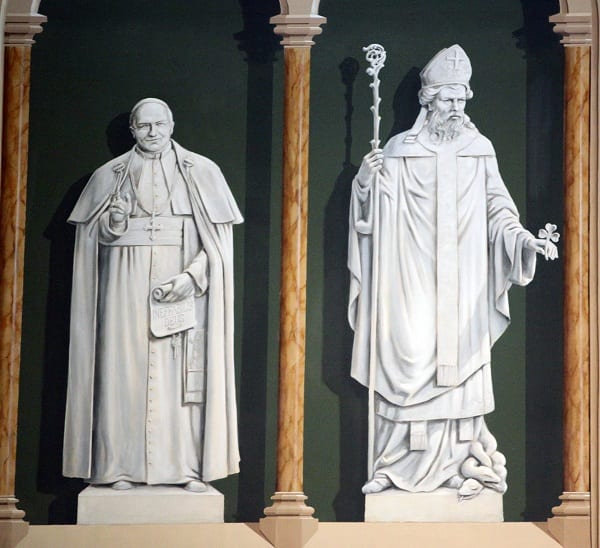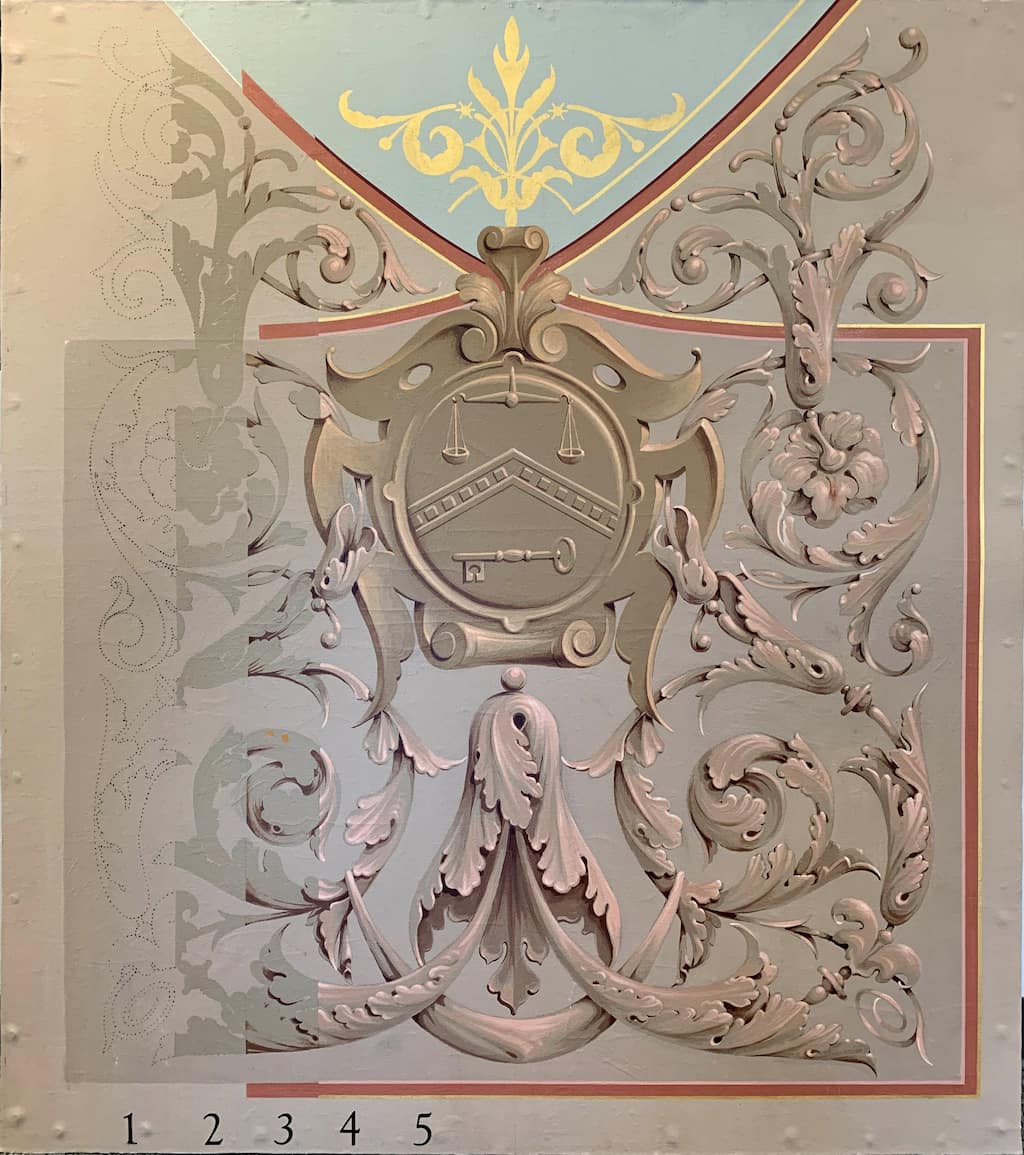The Use of Trompe L'oeil & Grisaille in Historic Structures

Trompe l’oeil and Grisaille, the arts of deception in the decorative arts, are of great marvel when mastered. Logistically, it is less expensive to paint an entablature than to carve the marble and secure the weight of the stone to an interior but it takes incredible skill to construct a lie convincing enough to hold up a ceiling.
Trompe l’oeil, translated from the French, means, “fool the eye.” It is a kind of optical illusion that appears in buildings all over the world to simulate objects and structures. The technique to develop seemingly three-dimensional objects with paint requires information from the room itself and skill from years of experience.


The shadows simulated in the paint composition must mirror the real shadows in the room. The shadow itself must be unique to the object. For instance, colored glass transmits a shadow diffused with colors of the glass where as an opaque object will create grey shadows. This use of shadow, color, and light is called chiaroscuro. Proper perspective in the composition is required if the painted object is going to appear real.
Shadows are composed of primary characteristics: the shape following the object; the most direct light source, and the closer the shadow to the object, the greater detail. The rules of perspective apply, meaning; the horizon line of the composition is most convincing at the eyelevel of the viewer.
Trompe l’oeil often fails because the improper attention to dimensions and to the real shadows in the space. The most effective trompe l’oeil compositions are convincing from many perspectives in the space, not just at close distance or straight on. Many decisions are made to develop a successful composition including the amount of detail, light, and objects depicted.
The earliest documentation of trompe l’oeil dates back to Ancient Greece. The artist, Zeuxis, supposedly painted a landscape so realistic to the nature portrayed that the birds came to eat the fruit in the painting. Now there is a humor to this story but there is a profound statement beyond a flock of dimwitted birds: nature itself could not recognize the difference between nature and Zeuxis’s illusionary painting.
Some of the most incredible trompe l’oeil designs can be found in the Vatican Museums. Many of the ceilings are painted to simulate mouldings. Michelangelo famously used illusionary painting to create faux architectural elements in the Sistine Chapel in order to break up the ceiling composition.

Grisaille
Grisaille painting is a technique executed entirely in shades of grey or another neutral. The word itself includes the French word, gris, meaning grey. Grisaille has two primary uses. When properly master, the technique might be used to imitate sculpture and architectural details making it the most complex form of trompe l’oeil. Grisaille may also be used during the preparation and planning stages of a mural.
To create a three-dimensional illusion, very much the same as trompe l’oeil, light and shade are painted into the composition utilizing different shades of grey. The shadows of a real object in the same place must be thoroughly studied in order to properly convey truth in the shadows. When grisaille is intended as trompe l’oeil, the simulated form is usually that of an architectural element.


The Steps
Figure 1 is a mock up panel completed in our studio illustrating the basic steps required of trompe l’oeil and grisaille.
This demonstrates the stages of developing the composition (left to right):
- Pounce which imparts the outline
- Base
- Deep shadows
- Mid-tones
- Highlights
Note the movement of the acanthus scrolls achieved in the final composition.
